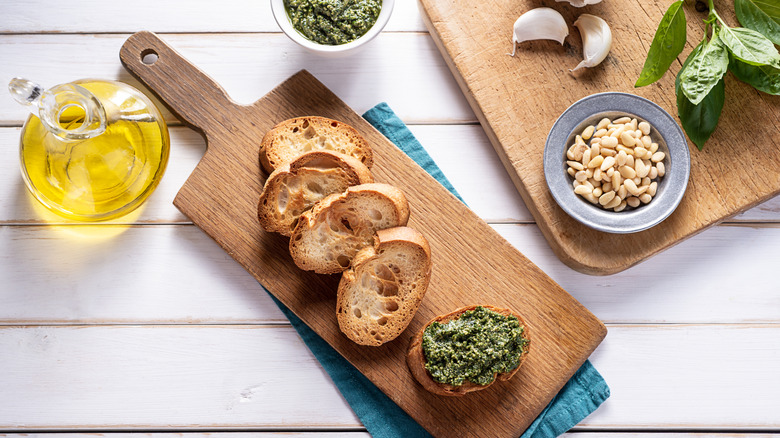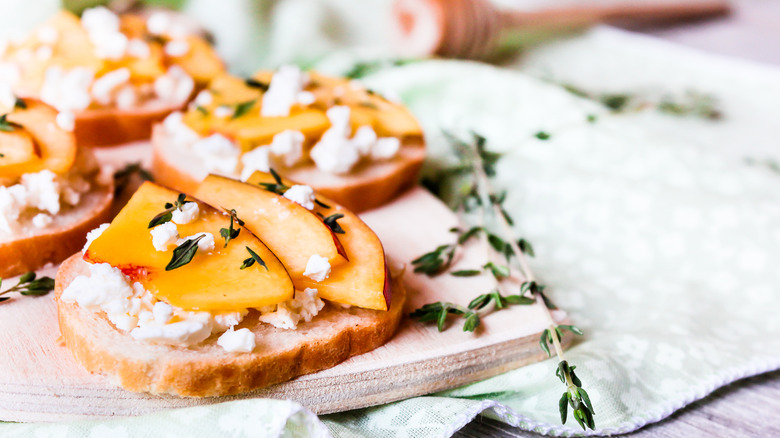Crostini Vs Bruschetta: What's The Difference?
The terms bruschetta and crostini might be used interchangeably at times, but they are not the same, despite their surface similarities. The differences between the two comes down to the thickness of the bread, the size of the pieces, and the toppings people put on them. Slice the bread a bit thicker and force a foodie to eat it in three bites or more, and you've got bruschetta. Slice the toast thin and make it bite-sized, and you've got crostinis. In fact, crostini even means little crusts in Italian.
Baguettes make for excellent options if you're making crostinis. Because they're meant to go into your choppers in one fell swoop, you don't want the toast pieces to be much bigger than about 1½ inches across. Baguettes are usually 3 inches in diameter. Once you cut the bread into slices, it's ain't no thang to cut each individual slice in half again, which leaves you with a piece of toast that's tiny enough to fit into your mouth.
Bruschetta is standardly made with thick slices of sourdough bread, though ciabatta is also a popular crusty choice for bruschetta. The thickness of the slices is important, because some of the ingredients that typically top bruschetta, like diced tomatoes and olive oil, could make the bread soggy. Think Goldilocks here — not too thick, not too thin, but rather, just right. In plainer terms, cut the bread in ¼ to ½-inch slices and you'll have a pretty perfect base for bruschetta.
What should you top your crostini and bruschetta with?
Bruschetta recipes usually feature plump garden–fresh tomatoes (which you should prep properly to avoid soggy bread), bits of basil, garlic, and a generous brushing of olive oil or a combo of olive oil and butter. Sometimes, if the chef is particularly ambitious, the appetizer gets served with slices of grilled chicken and melted cheese as well. If cheese is added, it's typically fresh mozzarella cheese in keeping with the appetizer's Italian roots. When it's topped with melted cheese and chicken, it's okay to "break the rules" and serve the whole dish hot, instead of cold on top and warm on the bottom as is standard. That said, if you're sticking to the go-to toppings when making a batch of this toasty snack, there's no need to complicate matters by cooking it if you don't want to.
Crostinis are more versatile than their thicker, larger counterparts in many ways. If you serve crostini with a charcuterie platter, the bite-sized morsels are a lovely foundation on which to stack ingredients like cured meats, sliced or creamed cheeses, and even an artichoke or spinach dip. They also taste great when you top them with something sweet and delicate, like three-ingredient strawberry jam and cream cheese. Or if you're feeling a bit more adventurous, swap out the strawberry spread for jalapeño jam to jack up the spice quotient. In other words, crostini are open to all kinds of delish toppings, so long as they won't ruin the tiny, crispy toasts by turning them into a soggy mess.

